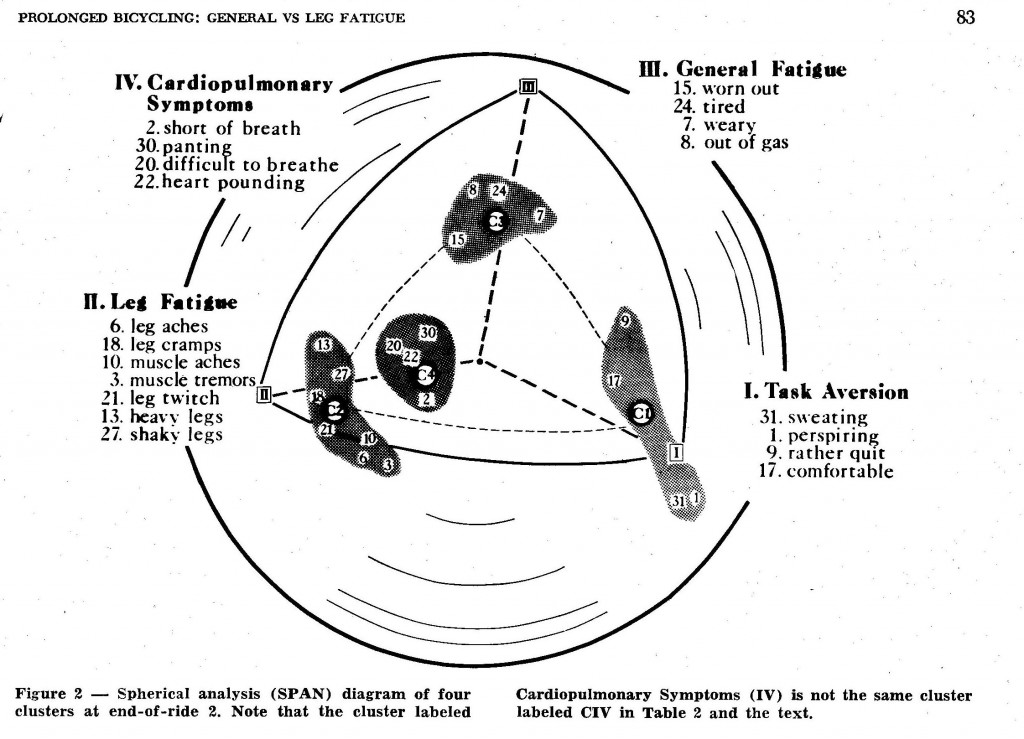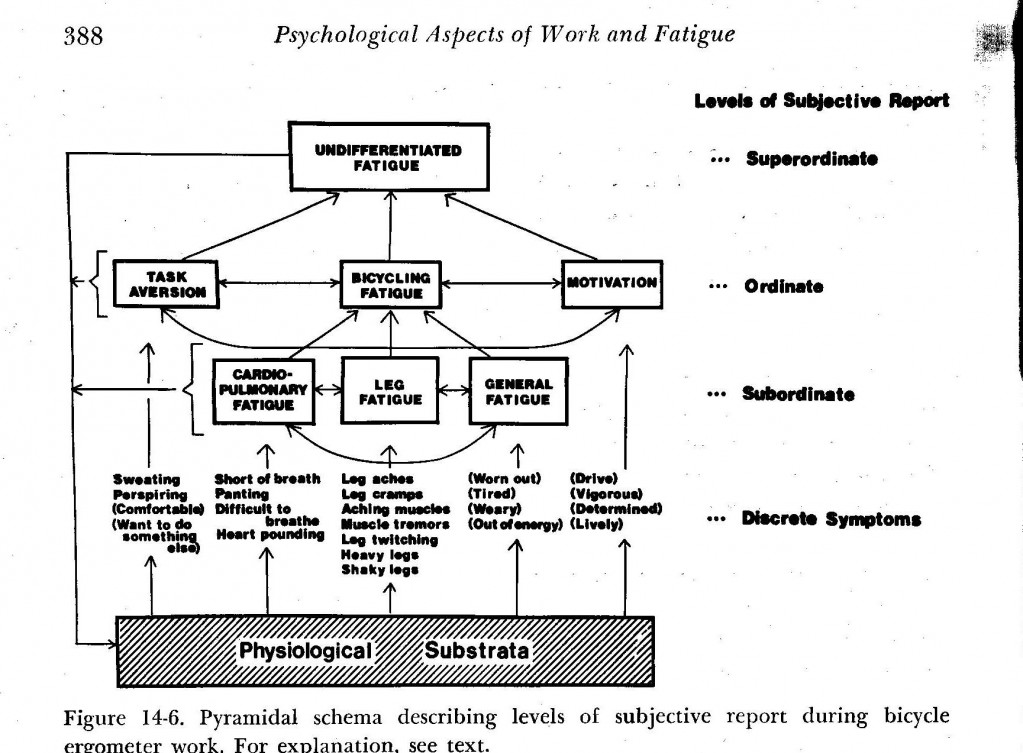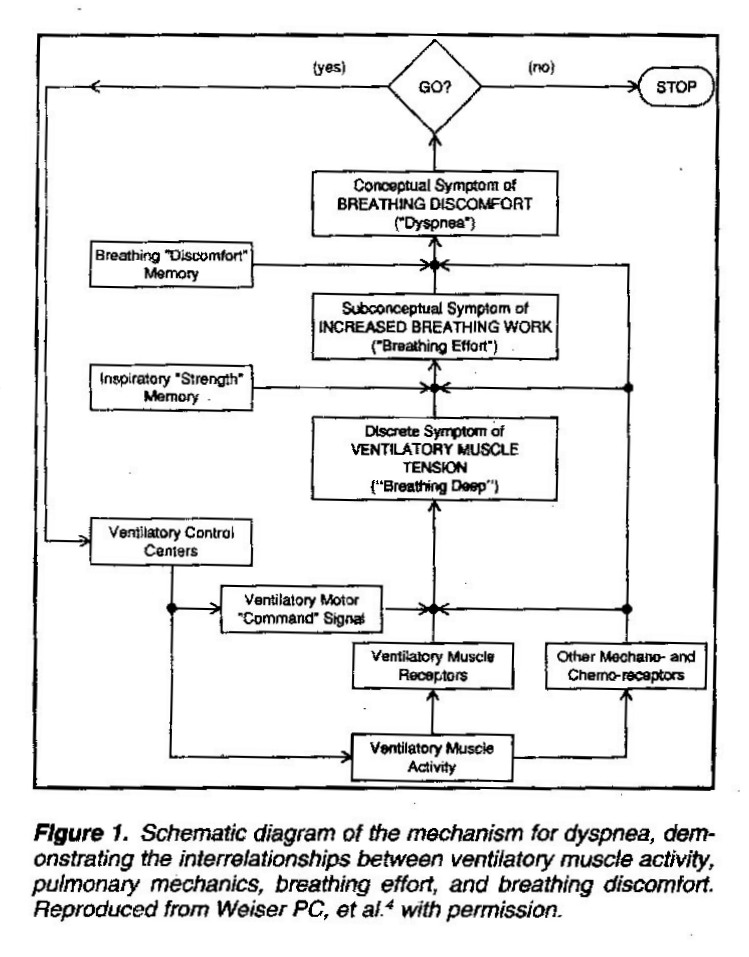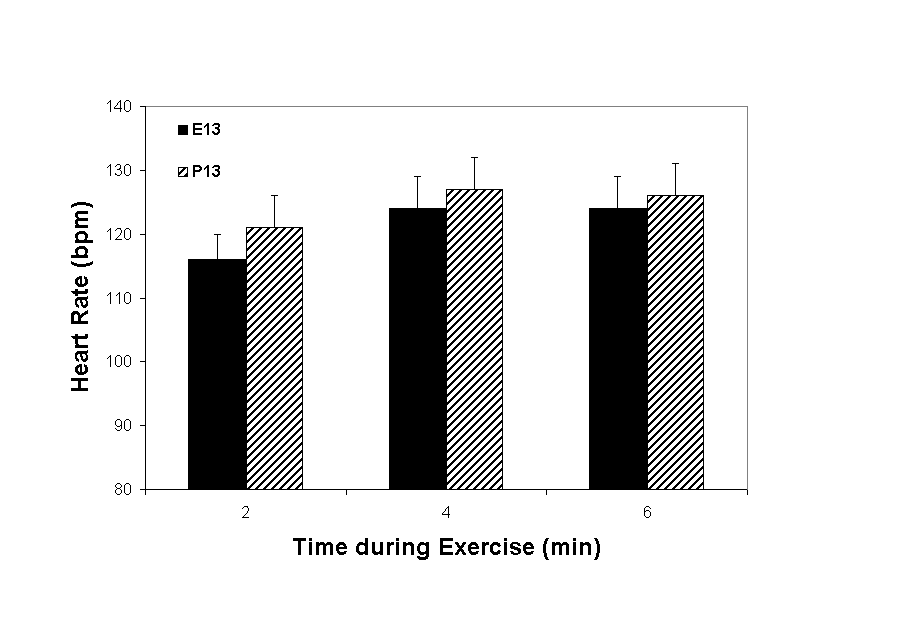Professor: Welcome to this Blog and a look at topics for June 2013 thru September 2013.
Overall, the goal is to get deeply involved with Perception and Regulation of Endurance Performance.
Student: How deep is deeply involved?
Professor: How deep in physiology? Or how deep in psychology?
Student: Proske & Gandevia (2012) are physiologically deep.
Professor: Their excellent in-depth review on Proprioceptive Senses is superb. And they were clear that,
“The subject of proprioception lies at the boundary between
neurophysiology and neuropsychology. In this review we
have taken a more physiological view and restricted ourselves
to a discussion of aspects of the physiology of proprioceptors,
their central projection patterns, and the generated
sensations.”
Professor: Please notice that last word, “sensations”. In their review, they soon comment that,
“An expanding field concerns the interactions
between proprioception, vision, and vestibular inputs.
While we discuss some of this, we have not reviewed the
area exhaustively. The same applies at the more
psychological end of the subject, for example,
sensorimotor integration in the generation
of concepts of “wellness,” emotions, and social interactions.”
[Emphasis added]
Professor: I am guessing that they do not want to discuss “perceptions”.
Student: Well, who have been psychologically deep?
Professor: Well, in the 1970s there were at least two researchers, Kinsman & Weiser (1976), who were psychophysiologically deep.
Student: Hey! That’s you!
Professor: Yup; I’ve been in the trenches off and on for a while.
So now, let us take a trip down memory lane and update ourselves about:
- What are the symptoms we experience during prolonged performance?
- Have they been discussed lately in a comprehensive multidimensional overview?
- If the key symptoms still are thought to be effort, exertion, pain, and fatigue, what are the definitions for each?
- What are the current approaches to managing each symptom?
Student: Are you going to include, “How is this symptom detract from my performance?”
Professor: Definitely, the mechanism for each symptom and recent research updates are included.
The following are the planned topics:
Overview:”It hurts to run a long ways” in at least Two Parts
1) Symptoms of prolonged exercise
We will update a chapter: Kinsman, R. A., & Weiser, P. C. (1976) Subjective symptomatology during work and fatigue. In E. Simonson & P. C. Weiser (Eds.), Psychological aspects and physiological correlates of work and fatigue. Springfield, IL: Thomas, Pp. 336-405.
Included in the chapter is a cluster analysis of symptoms reported at termination of a prolonged bicycle ride:

Professor: This figure show four of the five cluster found: Task Aversion, Leg Fatigue, General Fatigue, and Cardiopulmonary Symptoms. The last cluster, Motivation, is not shown. The post will examine recent research in fatigue and other symptom clusters.
Next the chapter showed a pyramidal schema that was devised to explain the clustering of symptoms:

Professor: Figure 14-6 from the chapter will be explained in greater detail.
Student: How do these symptoms affect overall performance?
2) Interactions between changes in symptoms and differences in performance
Professor: In 1975, I had the fortune to be invited to speak at Gunnar Borg’s Symposium on Physical Work and Effort. Our presentation (Weiser et al., 1977) was entitled, ” Psychophysiological interactions leading to increased effort, leg fatigue, and respiratory distress during prolonged, strenuous bicycle riding.” We analyzed our data for physiological variables and symptom report, found there were a wide range of durations before terminating exercise, divided the participants into three groups (durations: Least Fit 13±3 min; More Fit 25±5 min; and Most Fit 59±6 min).
In this post the results will be the details. However, the figure below showed the plot of the change in Leg Fatigue scores against the decrease in vastus lateralis EMG amplitude:
Student: Has anyone tried to replicate and/or improve this experimental approach?
Professor: I wish that I had any answer. The post will be a chance to “Catch up”.
Symptom #1: Dyspnea or Shortness of Breath
Professor: My guess that this system is the most intensely investigated.
- Since dyspnea happens during high altitude mountain climbing and military maneuvers or with persons having breathing disorders, there is a lot of recent research that I want to examine.
- Are the definitions of breathing discomfort, increased breathing work, and ventilatory muscle tension clear and concise?
- Is dyspnea a unidimensional symptom or a multidimensional set of symptoms?
- Are the psychophysiological components comprising the mechanisms for dyspnea understood?
- How can we improve the figure below from Weiser PC, Henson (1992):
Professor: How is our psychophysiological knowledge being used and being updated to aid the tolerance of these dyspnea symptoms?
Symptom #2: Pain
Student: Surely, isn’t the psychophysiology of pain perception quite well understood.
Professor: Yes, indeed. In fact, the kinds of information about the descending pathways that ameliorate the perception of uncomfortable pain could also be examples to be applied to other discomforts of prolonged exercise.
- First, how are the different dimensions of pain defined?
- Can a cyclist predict pain when doing a hill climb? What compares the actually occurring pain to what is expected?
Student: Didn’t you do a blog post on the pain experienced by Olympic class cyclists?
Professor: Yes. One of my first posts was about a study by Jeff Kress and Traci Statler who interviewed these top-notch cyclists:
Cyclists’ strategies for coping with exertion pain during performance 2007
Professor: In the future post, or probably series of posts, I will re-summarize this old post. Also I will add Part 2 about how these remarkable athletes deal with their potentially defeating pain.
Symptom #3: Effort
Student: What is the definition of ” Effort “? And is effort related to muscle “Drive”?
Professor: Wow! Excellent, intriguing questions. The post(s) for this topic will begin by a very serious look at the definitions used, if are used. Or comments will be made about presumptions.
Student: Also, assuming we can agree on definition of effort, will we be talking about an absolute value like “Somewhat Hard”, or will the discussion be on relative values like “Now Push Harder. A little Harder. Okay, just right.”
Professor: Well, the classical experimental studies used instruction to produce a movement to match a fraction of maximum voluntary contraction rather than utilize subjective report to set the intensity.
Student: Will these post(s) discuss, “What senses muscle force exerted during locomotion?”
Professor: Yes. I will briefly discuss Proske & Gandevia’s review on the physiology of proprioceptive senses. And of course the topic will be extended into the perception of effort.
Symptom #4: Exertion
Student: Finally you are addressing Perceived Exertion.
Professor: Yup. This is a very pertinent topic because this perception can be used to estimate or more importantly produce exercise intensity. An example is shown below from a study of cardiac patients (Weiser et al., 2007). The participants could accurately producing an intensity of “Somewhat Hard” (P13). The graph below compared the produced heart rate to the target heart rate found when the nurse set the workrate for the target heart rate that was estimated by the patients to have an intensity of “Somewhat Hard” (E13):
Figure: Cardiac patient using RPE to estimate intensity of E13 or actually produce intensity at P13 (modified from Weiser et al.. 2007).
Professor: An interesting comment will be made about how Gunnar Borg decided to name this perception, “Perceived Exertion”.
Student: This is similar to perceiving the pace required for a running race. And how is exertion sense used to produce a race pace and to adjust pace later in the race?
Professor: Also I have other questions like, “What senses exertion, especially during high intensity sport?”
Symptom #5: Fatigue
Student: Now you are coming full circle from the Overview on Subjective Symptoms that used the perception of fatigue as its focus.
Professor: Defining fatigue as a debilitating phenomenon, or as a process, or as a perception seems to still be a challenge. Sometime before 1971, Ernst Simonson (1971, 1976) wrote the following:
“The word fatigue was used in common language long before physiologists, psychologists, and clinicians attempted to give it a more specific meaning. Many of the investigators proposed their own definitions, often disregarding those of others, leading to confusion in terminology. Confusion in terminology is, of course, not specific for fatigue research.”
Student: No kidding!
Professor: And I look forward to getting answers to many questions such as these
- What increases the rating of perceived exertion (RPE) during a constant work rate?
- Is the mechanism related to the Central Governor Model?
Stay tuned.
References
Kinsman, R. A., & Weiser, P. C. (1976) Subjective symptomatology during work and fatigue. In E. Simonson & P. C. Weiser (Eds.), Psychological aspects and physiological correlates of work and fatigue. Springfield, IL: Thomas, pp. 336-405.
Proske U, Gandevia SC. (2012) The proprioceptive senses: their roles in signaling body shape, body position and movement, and muscle force. Physiol Rev 92: 1651–1697.
Ernst Simonson, Editor. (1971) Physiology of work capacity and fatigue. Springfield, IL: Charles C Thomas.
Simonson E, Weiser, PC, editors. (l976) Psychological Aspects and Physiological Correlates of Work and Fatigue. Springfield, IL: Charles C. Thomas.
Weiser PC, Henson DM. (1992) Mechanisms of Exertional Dyspnea in Patients with Chronic Heart Failure. Heart Failure 8: 202-209.
Weiser PC, Stamper DA, Dickinson AL. (1977) Psychophysiological interactions leading to increased effort, leg fatigue, and respiratory distress during prolonged, strenuous bicycle riding. In: Physical work and effort, Borg G, ed. Oxford, England: Pergamon Pr, 401-416.
Weiser PC, Wojciechowicz V, Funck A, Robertson RJ. (2007) Perceived effort step-up procedure for self-regulating stationary cycle exercise intensity by patients with cardiovascular disease. Perceptual and Motor Skills 104: 236-253.

